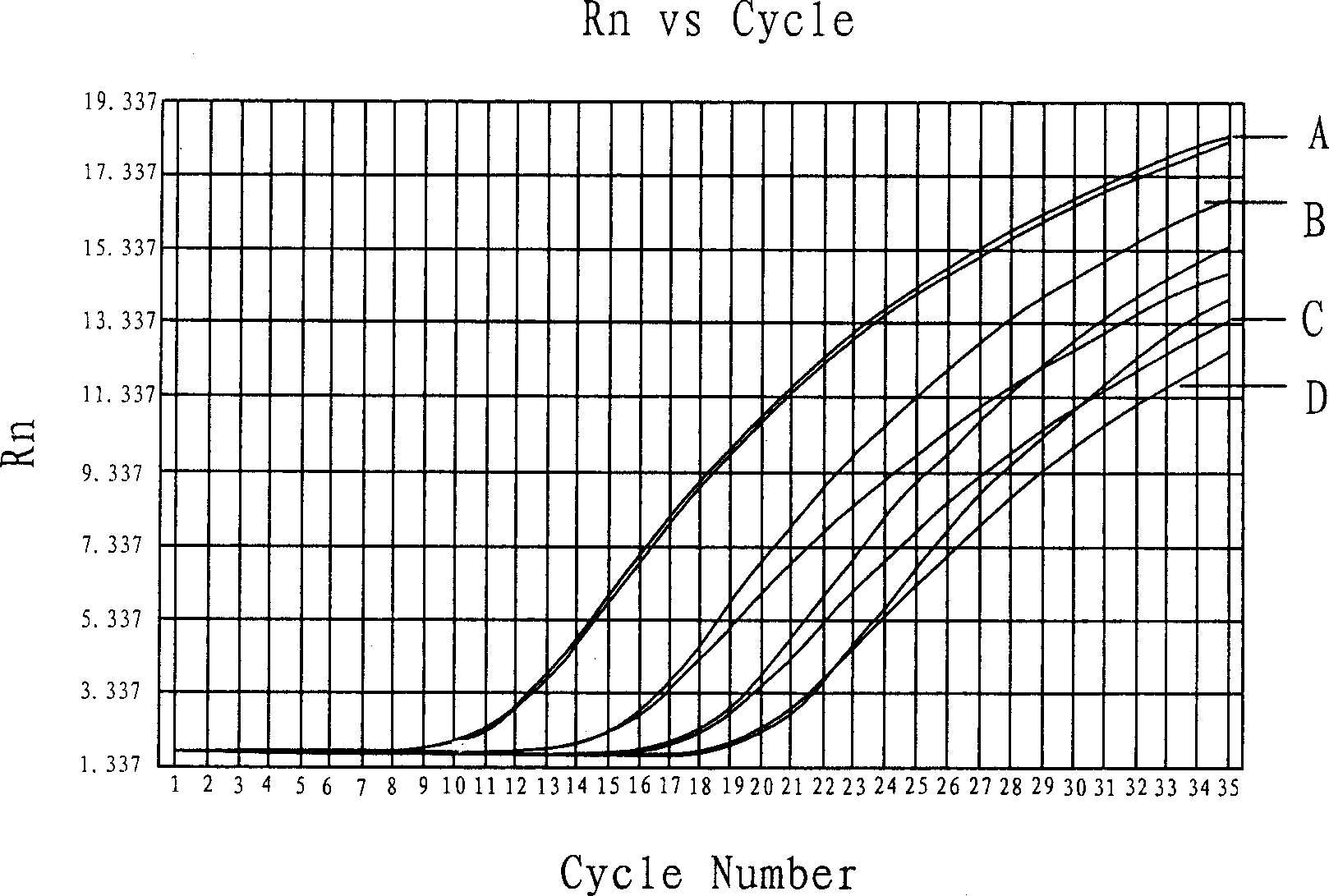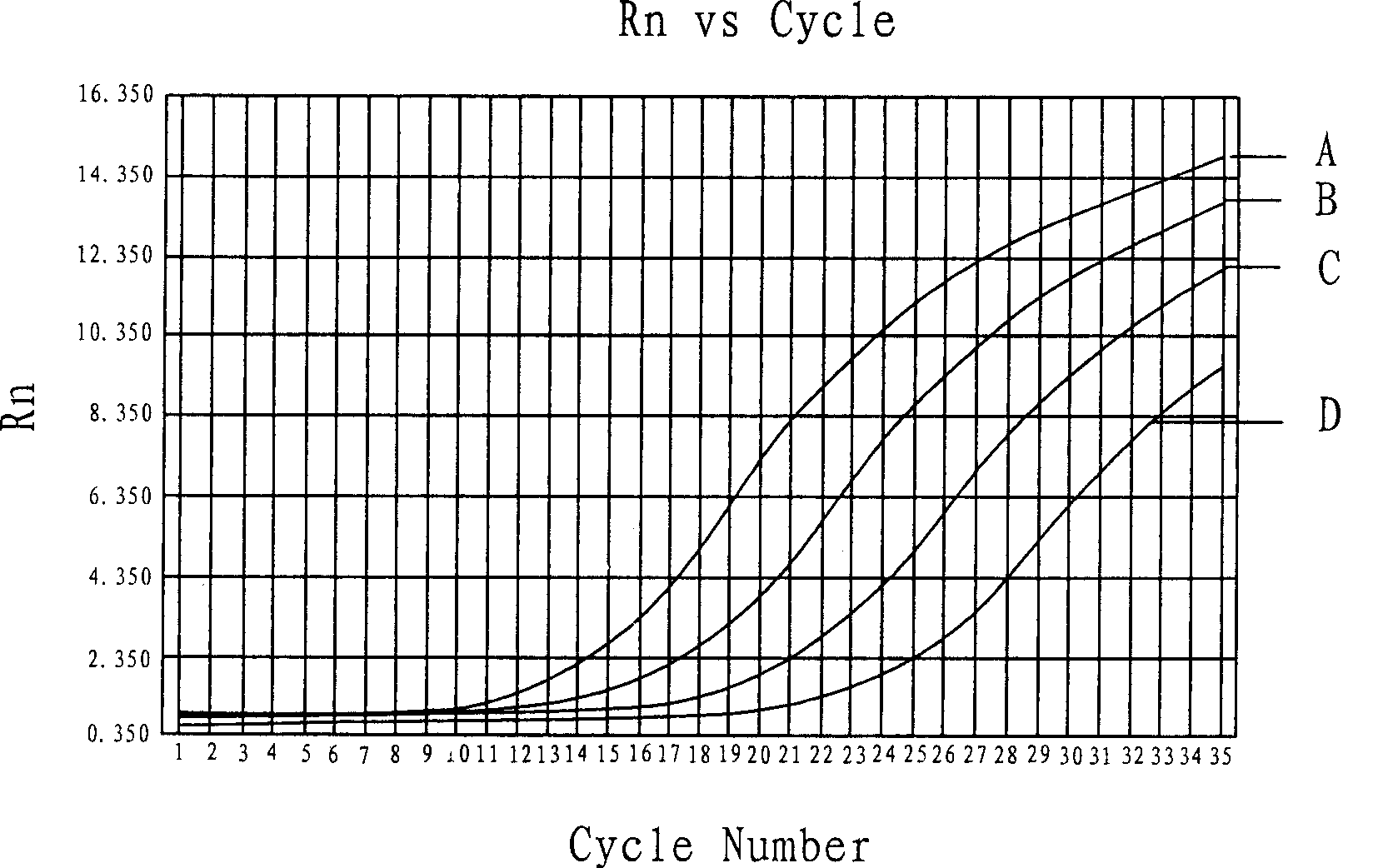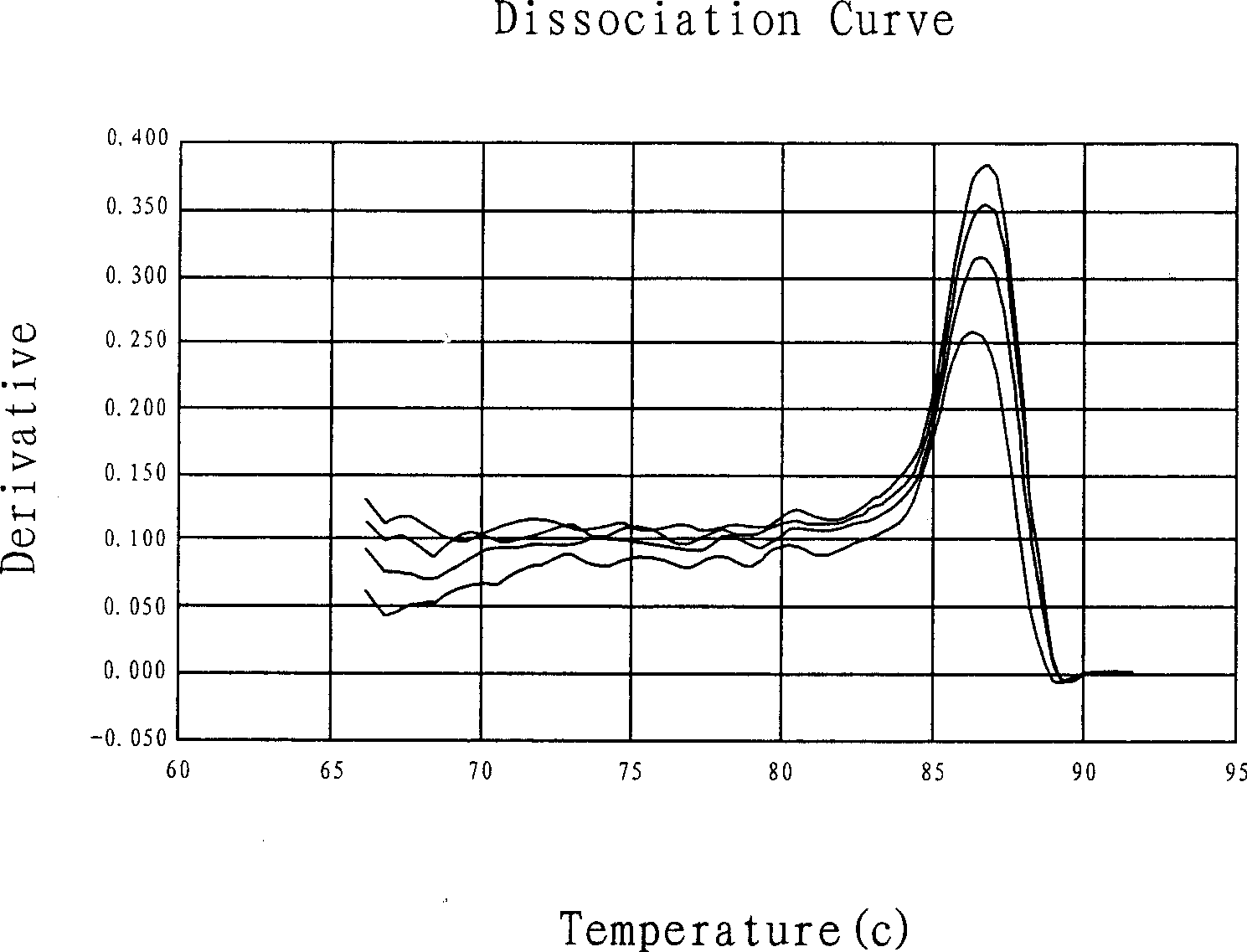Real time fluorescent PCR method for detecting aquatic product food allergen gene
A technology of food allergy and real-time fluorescence, which is applied in biochemical equipment and methods, fluorescence/phosphorescence, microbial measurement/inspection, etc., to achieve the effect of high sensitivity and short detection time
- Summary
- Abstract
- Description
- Claims
- Application Information
AI Technical Summary
Problems solved by technology
Method used
Image
Examples
Embodiment 1
[0030] Embodiment 1: be used for detecting the real-time fluorescent PCR of carp Par gene
[0031] The Par gene was detected on carp muscle total RNA diluted 10 times by using TaqMan probe fluorescent PCR method. Par gene upstream primer 0.5 μL, Par gene downstream primer 0.5 μL, Par gene probe 0.3 μL, Oligo dT 15 1 μL and 0.4 μL of RNA template. The reaction parameters were reverse transcription at 48°C for 30 minutes; pre-denaturation at 94°C for 10 minutes; 94°C / 40S, 55°C / 45S, 72°C / 90S, a total of 35 cycles. The results showed that the amplification kinetic curve was a typical S-type, and gradually shifted backwards with the decrease of sample concentration; the Ct value gradually increased with the decrease of sample concentration (such as figure 1 shown).
[0032] exist figure 1 In the middle, the kinetic curve of TaqMan probe fluorescent PCR (Par gene) amplification of 10-fold serially diluted carp RNA; A.1:10 dilution, Ct=15.3089; B.1:100 dilution, Ct=16.5373; C.1 :...
Embodiment 2
[0033] Example 2: Real-time fluorescent PCR for detection of Scylla serrata TM gene
[0034] The TM gene was detected on the 10-fold serially diluted muscle total RNA of Scylla serrata by SYBR Green fluorescent PCR method. The reaction system was PCR Master Mix 10 μL, sterilized ultrapure water 6.7 μL, MultiScribe Reverse Transcriptase 0.5 μL, RNase Inhibiter 0.4 μL, TM gene upstream primer 0.5 μL, TM gene downstream primer 0.5 μL, Oligo dT 15 1 μL and 0.4 μL of RNA template. The reaction parameters are reverse transcription at 48°C for 30 minutes; pre-denaturation at 94°C for 10 minutes; 94°C / 40S, 55°C / 45S, 72°C / 90S, a total of 35 cycles; set the melting curve analysis from 60°C to 95°C. The results showed that the amplification kinetic curve was a typical S-type, and gradually shifted backwards with the decrease of sample concentration; the Ct value gradually increased with the decrease of concentration (such as Figure 2A shown); the melting curve profile of the amplifie...
Embodiment 3
[0036] Example 3: Fish Par gene detection in unknown samples
[0037] The detection of the Par gene in the fish Par gene in the unknown sample was carried out by using the TaqMan probe fluorescent PCR method, and the specific conditions refer to Example 1. The results showed that the amplification kinetic curve of the unknown sample was a typical S-type, and no change in the fluorescent signal was detected in the negative control, indicating that the unknown sample contained the fish Par gene (such as image 3 shown).
[0038] exist image 3 In, the kinetic curve of TaqMan probe fluorescent PCR detection of fish Par gene in unknown samples; A. Sample S-I, Ct=15.2695; B. Sample S-II, Ct=16.0500; C. Negative control, Ct=Undet.
PUM
 Login to View More
Login to View More Abstract
Description
Claims
Application Information
 Login to View More
Login to View More - R&D
- Intellectual Property
- Life Sciences
- Materials
- Tech Scout
- Unparalleled Data Quality
- Higher Quality Content
- 60% Fewer Hallucinations
Browse by: Latest US Patents, China's latest patents, Technical Efficacy Thesaurus, Application Domain, Technology Topic, Popular Technical Reports.
© 2025 PatSnap. All rights reserved.Legal|Privacy policy|Modern Slavery Act Transparency Statement|Sitemap|About US| Contact US: help@patsnap.com



